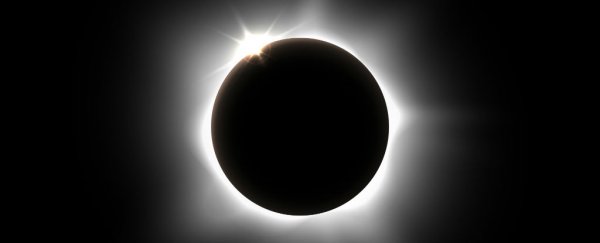On March 20, we'll be able to see the first solar eclipse since 3 November 2013. The event, during which the Moon with completely cover the Sun in our sky, will cast a 463 km wide by 150 km long shadow, causing a brief period of darkness for some people in Europe.
The path the Moon is expected to take will start above the southern tip of Greenland, and then it will move counterclockwise over the North Atlantic and Arctic Oceans, moving between Iceland and the UK. It will end up over the Danish Faroe Islands, and then the Norwegian Svalbard archipelago, before rolling away just before it passes over the North Pole.
According to Joe Rao at Space.com, the peak of the eclipse will occur in the sky about 260 km north of the Faroes, in the Norwegian Sea, and as weather prospects for the day aren't great, locals are reportedly planning to take to the seas to get a better view. After plunging the Faroe Islands in momentary darkness - note to locals: here's your chance to convice everyone that you have a direct line to Pachacamac, the Sun God - the Moon's shadow will fall over Svalbard.
The huge shadow it's expected to cause has been explained by what the Moon will be doing a few hours before the event. "About 13.5 hours earlier, the Moon will arrive at that point in its orbit closest to Earth (perigee), 357,584 km away," says Rao. "And because the shadow is passing over the Arctic, it will strike the Earth at a very oblique angle, resulting in its distinct elliptical shape."
That perigree moment means the Moon will look much bigger than it normally does, which means not only will Earth experience a total solar eclipse, but we're getting a Supermoon event too. And, oddly enough, at the same time, Earth will also be experiencing the Spring equinox, which occurs right between the longest and shortest days of the year. During this event, the day and night hours are equal, because Earth's axis will be exactly perpendicular to the Sun's rays. Once the equinox is over, the days will get longer in the northern hemisphere, and shorter in the southern hemisphere.
The equinox will occur at the same time as a solar eclipse in 2053 and 2072, says Andrew Griffin at The Independent, but it might not necessarily occur on the same day.
For the vast majority of us who don't live in either of those areas, there are a couple of places you can go online for a front-seat view. The online Slooh Community Observatory will broadcast the solar eclipse live from 4:30 am EDT (8:30 am GMT) on 20 March, as will the Virtual Telescope Project, starting at 4 am EDT (8:00 am GMT). That's about a 7 to 7:30pm start for Australians on Friday night. Happy viewing!
Source: Space.com
